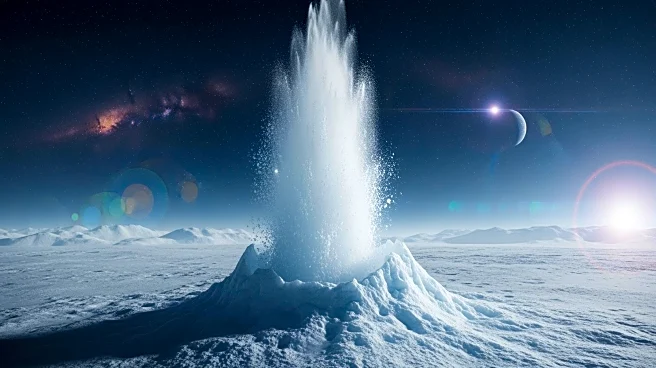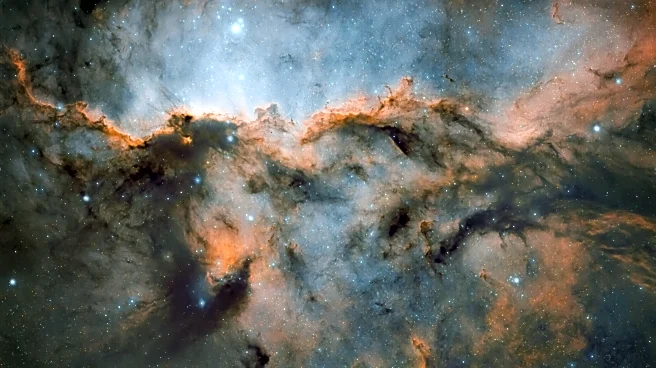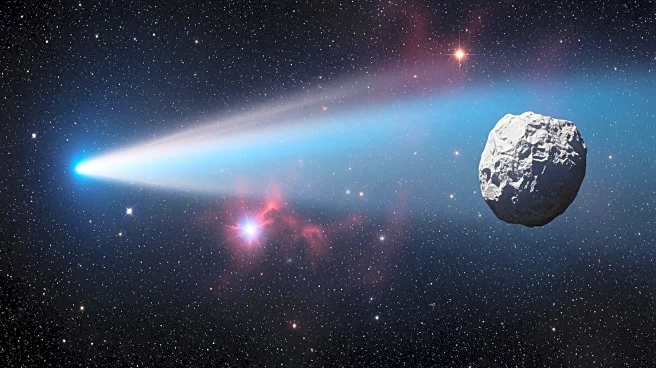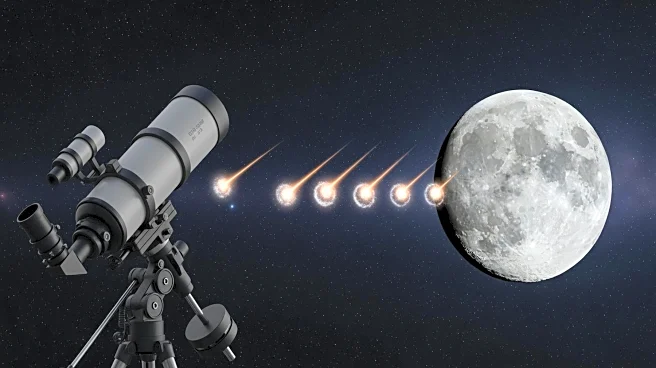What's Happening?
Michael Benson, an author, artist, and filmmaker, has released a new science coffee table book titled 'Nanocosmos: Journeys in Electron Space.' The book, published by Abrams Books, showcases a collection of images captured using scanning electron microscopes
(SEM), including exclusive lunar impact glass images from NASA's Apollo 16 mission. These images reveal the intricate and complex structures of lunar samples, which are invisible to the naked eye. Benson's work fuses art and science, presenting a mesmerizing view of the micro-mini scale of various natural phenomena, including radiolarians, dinoflagellates, diatoms, insects, and microscopic flowers.
Why It's Important?
The release of 'Nanocosmos' is significant as it bridges the gap between art and science, offering a unique perspective on the natural world through advanced imaging technology. By highlighting the Apollo 16 lunar samples, the book provides valuable insights into the composition and formation of lunar impact glass, contributing to the understanding of lunar geology. This fusion of art and science can inspire both scientific inquiry and artistic creativity, potentially influencing educational approaches and public interest in space exploration and microscopy.
What's Next?
The book's release may lead to increased interest in electron microscopy and its applications in various scientific fields. It could also inspire further collaborations between artists and scientists, exploring new ways to visualize and interpret scientific data. Additionally, the captivating imagery may attract attention from museums and educational institutions, potentially leading to exhibitions or educational programs that highlight the intersection of art and science.
Beyond the Headlines
Beyond its artistic and scientific appeal, 'Nanocosmos' raises questions about the accessibility and interpretation of scientific data. By presenting complex scientific phenomena in an aesthetically pleasing format, the book challenges traditional perceptions of science as purely analytical, encouraging a broader audience to engage with scientific concepts. This approach may foster a deeper appreciation for the beauty and complexity of the natural world, promoting interdisciplinary dialogue and collaboration.














